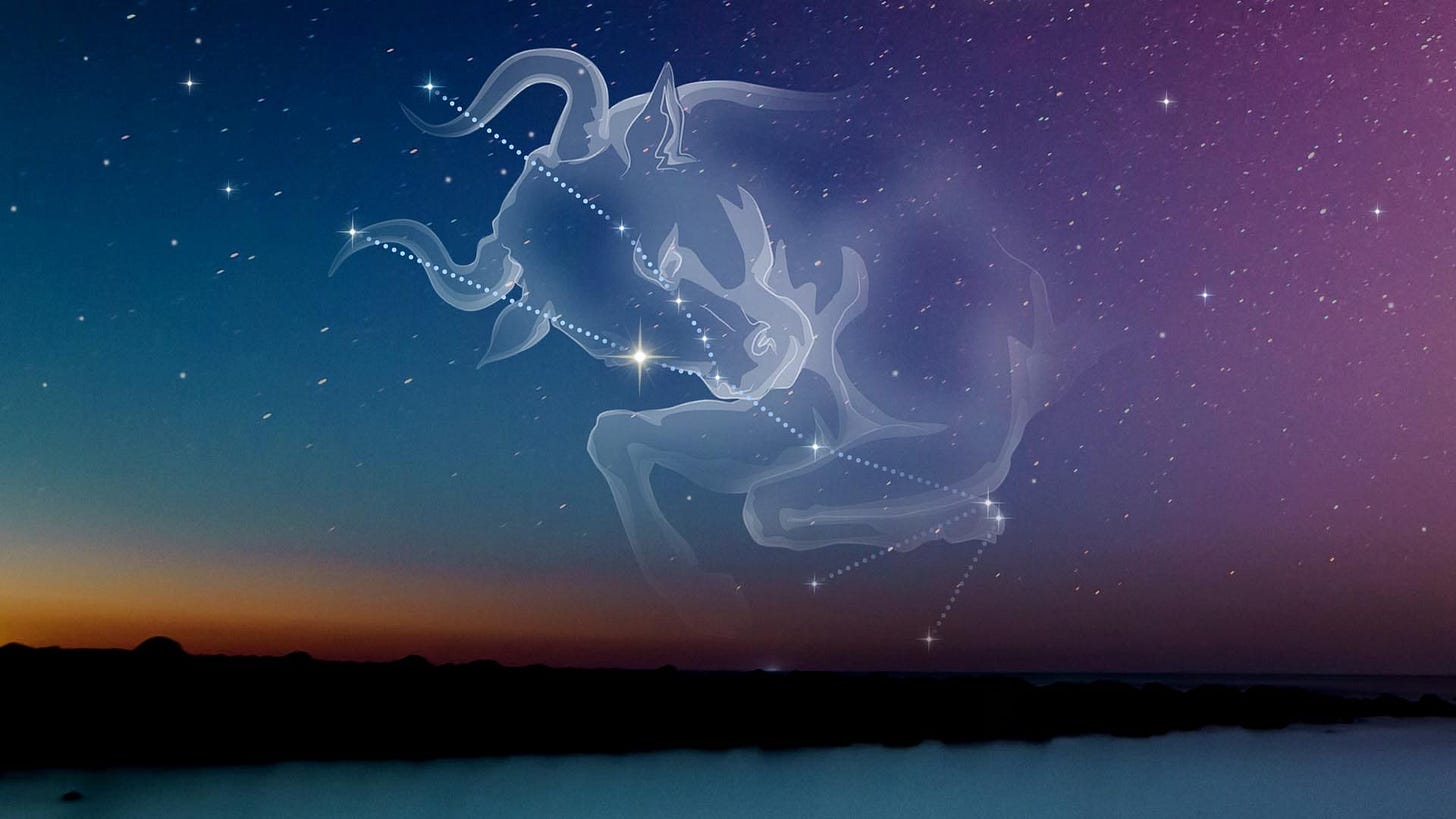The constellation Taurus sits in the northern sky, sandwiched between Aries (to the west, on the left), and Gemini (to the east, on the right). It is made up of seventeen stars which, together, are supposed to outline the head of the bull. It is visible in the northern sky from November through to March.
Aldebaran, the right eye of the bull, is the brightest star in the constellation and one of the brightest stars in the night sky. The name Aldebaran means follower, because it seems to follow the Pleiades—the cluster of stars that sits in the north-western part of Taurus—around in a circle through the night sky.
Aldebaran is located about 65 light-years from our own sun. In 1972, NASA launched the space probe Pioneer 10, which is heading, very slowly, in Aldebaran’s general direction. In two million years or so, it will make its closest approach to the star.

Taurus is one of the oldest constellations we know. Paintings of a bull beneath a grouping of dots that may represent the Pleiades were discovered in the Lascaux caves in France in the 1940s. In her wonderful book, The Human Cosmos, science writer Jo Marchant details how Michael Rappenglück, a paleoastronomy scholar who wrote his PhD thesis on the caves, noted that many of the bulls in the Hall of Bulls were depicted alongside the changing seasons. Paleolithic stargazers looking up and cataloguing the bull that they saw according to summer and winter, autumn and spring. Capturing the night stars as they circled through the sky, just as we do now.
The paintings are roughly 15,000 years old. Some argue that they’re even older.
Keep reading with a 7-day free trial
Subscribe to Notes From a Small Planet to keep reading this post and get 7 days of free access to the full post archives.



